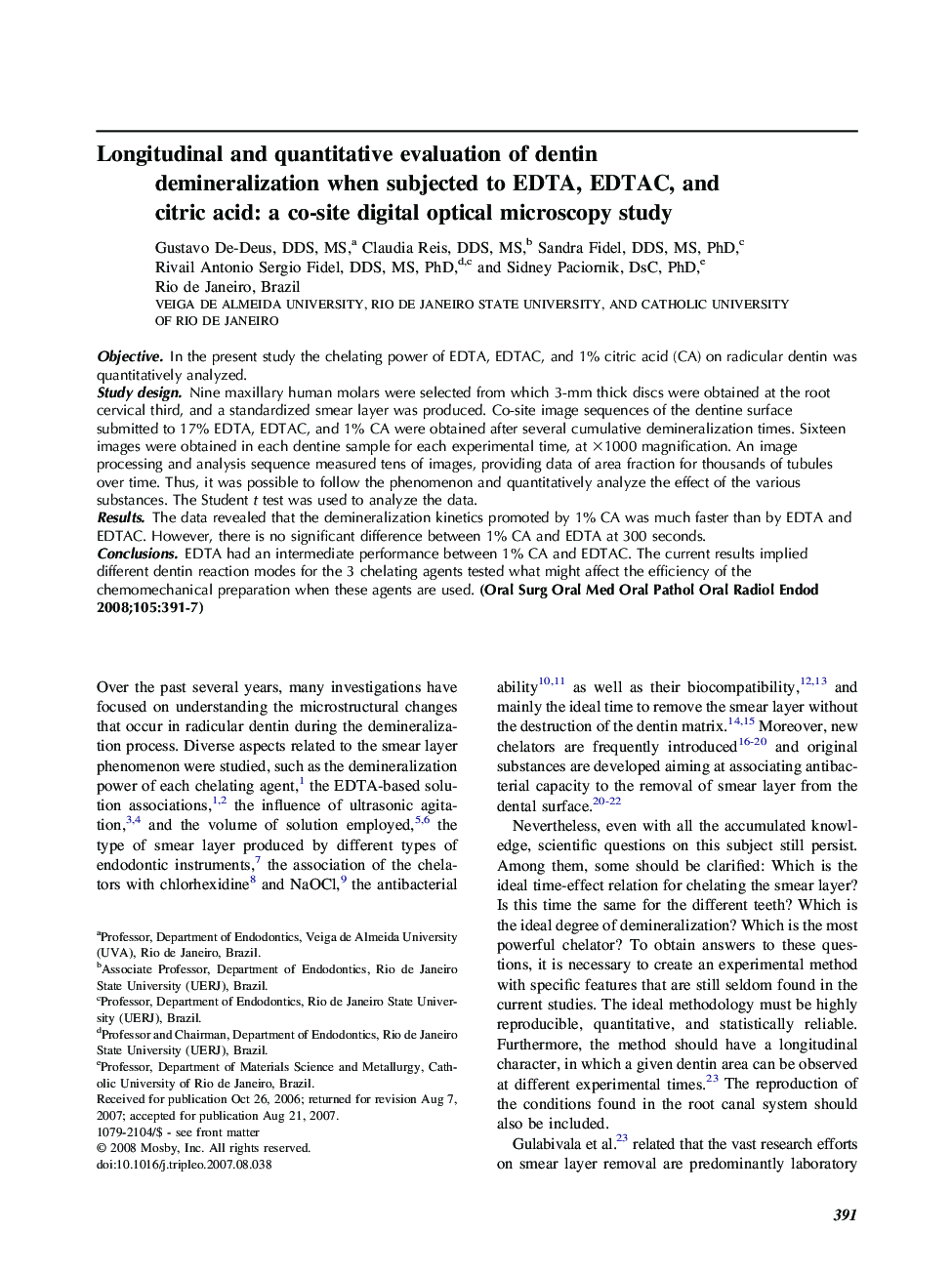| Article ID | Journal | Published Year | Pages | File Type |
|---|---|---|---|---|
| 3169046 | Oral Surgery, Oral Medicine, Oral Pathology, Oral Radiology, and Endodontology | 2008 | 7 Pages |
ObjectiveIn the present study the chelating power of EDTA, EDTAC, and 1% citric acid (CA) on radicular dentin was quantitatively analyzed.Study designNine maxillary human molars were selected from which 3-mm thick discs were obtained at the root cervical third, and a standardized smear layer was produced. Co-site image sequences of the dentine surface submitted to 17% EDTA, EDTAC, and 1% CA were obtained after several cumulative demineralization times. Sixteen images were obtained in each dentine sample for each experimental time, at ×1000 magnification. An image processing and analysis sequence measured tens of images, providing data of area fraction for thousands of tubules over time. Thus, it was possible to follow the phenomenon and quantitatively analyze the effect of the various substances. The Student t test was used to analyze the data.ResultsThe data revealed that the demineralization kinetics promoted by 1% CA was much faster than by EDTA and EDTAC. However, there is no significant difference between 1% CA and EDTA at 300 seconds.ConclusionsEDTA had an intermediate performance between 1% CA and EDTAC. The current results implied different dentin reaction modes for the 3 chelating agents tested what might affect the efficiency of the chemomechanical preparation when these agents are used.
